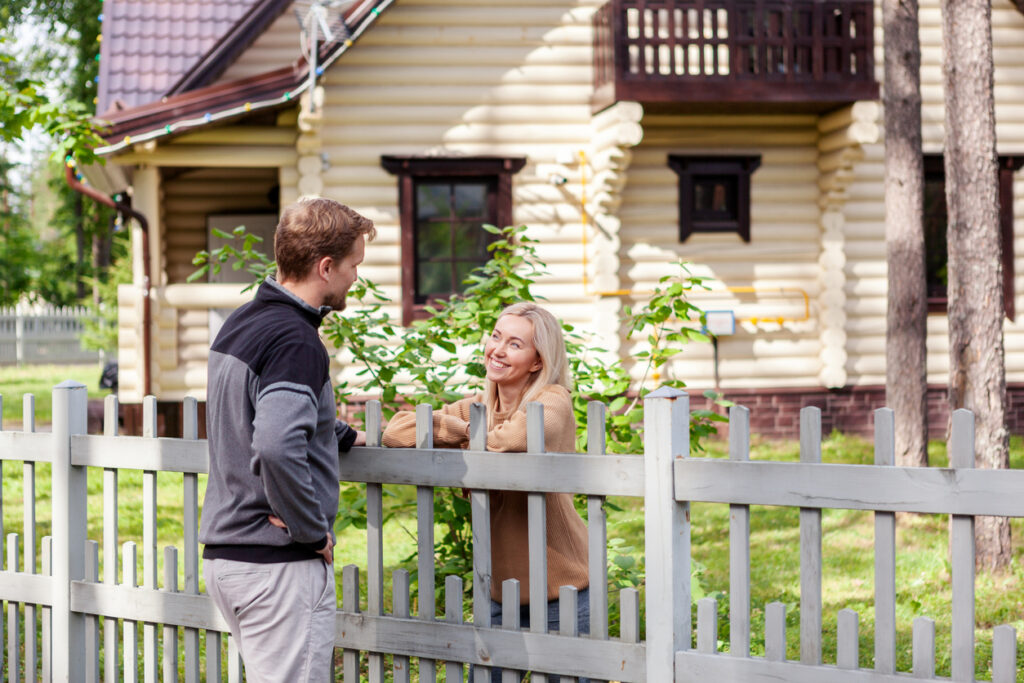1. The Green Spaces That Quietly Heal You

Have you ever noticed how stepping into a park, even for just a few minutes, can completely shift your mood? That’s not just in your head—green spaces are powerful. Neighborhoods with parks, tree-lined streets, and community gardens do more than just look pretty; they actively improve mental and physical health. Exposure to greenery has been linked to lower stress levels, reduced anxiety, and even better cognitive function. It’s not just about having a place to sit and relax; trees and plants literally improve air quality, reducing pollutants that could otherwise harm your lungs.
On a deeper level, access to nature encourages movement. People who live near parks tend to walk more, bike more, and even socialize more. The presence of green space has been connected to lower rates of obesity, heart disease, and high blood pressure. And here’s the kicker—studies have shown that even just looking at greenery through a window can have calming effects. If you’ve ever felt a little trapped in a concrete jungle, this is why. A lack of green space can lead to higher stress, less exercise, and even poorer sleep. That’s why some of the happiest neighborhoods in the world prioritize greenery in their urban planning.
2. Walkability: The Quiet Influence on Your Daily Choices

Ever wonder why some places just feel easier to live in? Walkability plays a huge role. In a walkable neighborhood, daily life naturally includes more movement—whether it’s grabbing a coffee, heading to work, or running errands. When shops, restaurants, and public transportation are within walking distance, you’re less likely to rely on cars, and that small change has a massive impact. People in walkable neighborhoods tend to have lower rates of obesity, better heart health, and even improved mental well-being. There’s something deeply satisfying about being able to take care of daily tasks without having to sit in traffic.
But the benefits go beyond physical health. Walkable communities tend to have stronger social connections. When people are out and about, they’re more likely to interact, whether it’s a quick chat with a neighbor or a spontaneous meet-up with friends. This sense of connection can reduce feelings of loneliness and isolation, which are major contributors to mental health issues. On the flip side, living in a car-dependent area can lead to more stress, less movement, and fewer social interactions. In a way, the ability to walk places isn’t just about convenience—it’s about creating a lifestyle that naturally supports better health and happiness.
3. The Unseen Impact of Noise (Or Silence)

You might not always notice it, but the noise level in your neighborhood plays a huge role in how you feel every day. Constant exposure to noise—whether it’s traffic, construction, or even loud neighbors—can increase stress levels, disrupt sleep, and even raise blood pressure. Over time, this kind of background stress wears on the body, making it harder to focus, relax, and even enjoy daily life. Noise pollution has even been linked to higher risks of heart disease and anxiety, meaning that a consistently loud environment isn’t just annoying—it’s actually unhealthy.
On the other hand, a quieter neighborhood can be a game-changer for well-being. Less noise means better sleep, which directly impacts energy levels, mood, and cognitive function. People who live in quieter areas tend to feel more relaxed, more in control, and even more productive during the day. It’s not about complete silence—some noise, like birds chirping or kids playing, can be positive. But when your environment is filled with an endless stream of honking horns, sirens, and city chaos, it can take a toll in ways you don’t even realize. Choosing to live in a place with manageable noise levels isn’t just a comfort—it’s an investment in your long-term health.
4. The Social Fabric That Keeps You Going

The people around you—whether you talk to them every day or just give them a nod in passing—have a bigger effect on your happiness than you might think. Living in a neighborhood where people know each other, support each other, and even just acknowledge one another can create a profound sense of belonging. This kind of social fabric is what makes communities feel safe, welcoming, and enjoyable to live in. Having neighbors you can rely on for small favors, casual conversations, or even just a friendly wave can reduce loneliness and create a stronger sense of emotional security.
Conversely, living in a neighborhood where no one interacts can have the opposite effect. A lack of social connection can lead to feelings of isolation and even increase stress levels. Studies have shown that people who live in socially disconnected neighborhoods are more likely to experience anxiety, depression, and even chronic illness. Humans are wired for connection, and the environment we live in plays a huge role in how much of that connection we get. When people engage with their neighbors, build friendships, and create community bonds, the entire neighborhood benefits. It’s a simple but powerful truth—your surroundings shape your relationships, and those relationships shape your well-being.
5. Access to Healthy Food (Or Lack of It)

Have you ever noticed how some neighborhoods seem to have fresh produce stands and health-conscious cafes on every corner, while others are surrounded by fast food and convenience stores? That’s not a coincidence—it’s a reflection of food accessibility, and it plays a major role in overall health. Living in an area with easy access to fresh fruits, vegetables, and nutritious meals makes it significantly easier to maintain a balanced diet. When healthy options are close by, people are more likely to make better food choices without even thinking about it.
On the flip side, neighborhoods considered “food deserts”—where grocery stores are scarce and fast food is the most convenient option—tend to have higher rates of obesity, diabetes, and heart disease. Even if you want to eat healthily, if your only nearby choices are processed, high-calorie foods, it becomes an uphill battle. Food accessibility is one of those invisible forces that quietly shape lives, influencing everything from energy levels to long-term health outcomes. It’s not just about personal willpower—your environment sets the stage for the kind of diet you’re likely to follow.
6. The Hidden Effects of Air Quality

Unless there’s visible smog in the sky, air quality isn’t something most people think about daily. But the truth is, the air you breathe can directly impact your health in ways you might not even notice. Areas with high pollution levels, often caused by traffic, industrial activity, or even certain weather patterns, have been linked to higher rates of asthma, respiratory infections, and even heart disease. Poor air quality doesn’t just affect the lungs—it can lead to chronic inflammation in the body, making people feel more fatigued and even affecting mental clarity.
In contrast, living in a place with cleaner air can have profound health benefits. Lower pollution levels mean fewer respiratory problems, better sleep, and even improved cognitive function. There’s a reason why people feel instantly refreshed after spending time in nature—it’s not just the scenery, but the actual quality of the air they’re breathing. Some neighborhoods are naturally positioned in cleaner air zones, while others are impacted by nearby highways, factories, or urban congestion. Even small steps, like having more trees or less traffic, can make a difference in how breathable the air is.
7. Safety and the Freedom to Move

Feeling safe in your neighborhood doesn’t just affect your peace of mind—it has a direct impact on your health and daily routines. When people feel secure, they’re more likely to go for walks, bike around town, and let their kids play outside. These activities aren’t just good for fitness; they foster a sense of freedom and relaxation. The ability to enjoy outdoor spaces without fear makes daily life feel more open and enjoyable. Safety also plays a role in mental well-being—knowing that you’re not constantly at risk reduces stress and improves overall happiness.
However, in areas where crime rates are higher, people often become more sedentary, opting to stay indoors rather than risk unsafe conditions. This can lead to a more isolated lifestyle, which can contribute to feelings of anxiety and even physical health decline. Neighborhoods with strong community bonds, well-lit streets, and proactive safety measures tend to have happier and healthier residents. Feeling safe isn’t just about statistics—it’s about how much freedom you have to engage with the world around you without worry.
8. The Impact of Public Spaces and Gathering Spots

Public spaces like plazas, libraries, and community centers may not seem like a big deal at first glance, but they play a crucial role in shaping how connected people feel to their neighborhoods. These spaces create opportunities for social interaction, cultural events, and even personal growth. A neighborhood with inviting public spaces tends to foster a sense of belonging, where people naturally meet, exchange ideas, and build relationships. Having accessible, welcoming places to gather makes it easier to form friendships and be part of something bigger than yourself.
When neighborhoods lack these communal spaces, the social fabric weakens. People have fewer chances to connect, and the area can feel more isolating. Public spaces also influence how much people engage in cultural or educational activities. When libraries are well-stocked and parks host local events, people are more likely to participate in enriching experiences. The best neighborhoods make it easy for people to come together, whether it’s for a casual afternoon chat or a lively community festival. These little interactions add up, shaping a happier and healthier way of life.
9. The Role of Local Businesses in Everyday Happiness

The kinds of businesses that exist in a neighborhood say a lot about its overall vibe. Locally-owned cafes, bookstores, and family-run shops create a sense of character and connection that chain stores simply can’t replicate. When people have favorite local spots where they feel recognized and welcomed, it strengthens their sense of belonging. Supporting small businesses also means keeping money within the community, which helps neighborhoods thrive. Even something as simple as knowing the barista at your regular coffee shop can create a meaningful connection that adds joy to daily life.
On the other hand, areas dominated by big-box stores and impersonal businesses can feel less warm and inviting. While convenience is important, there’s something special about being part of a neighborhood where people know your name and care about the community’s well-being. Local businesses often create gathering places where people can meet, share ideas, and form relationships. The more a neighborhood encourages local entrepreneurship, the more it becomes a place where people feel invested in one another.
10. The Psychological Influence of Aesthetics

It might seem trivial, but the way a neighborhood looks has a surprisingly deep impact on mental well-being. People are naturally drawn to beauty—clean streets, interesting architecture, and well-maintained homes all contribute to a sense of pride and happiness. When an area feels cared for, residents tend to be more engaged and active in their community. There’s a psychological effect at play: if your surroundings look pleasant and inviting, your mood tends to follow suit.
Conversely, neglected or run-down neighborhoods can have the opposite effect, leading to feelings of apathy and discouragement. When streets are littered, buildings are in disrepair, and public spaces feel unkempt, it sends a message that no one cares. This can impact how people perceive their own worth and their level of motivation to engage with their surroundings. A neighborhood that is visually appealing doesn’t just make a good first impression—it nurtures a healthier, happier state of mind for the people who live there.


